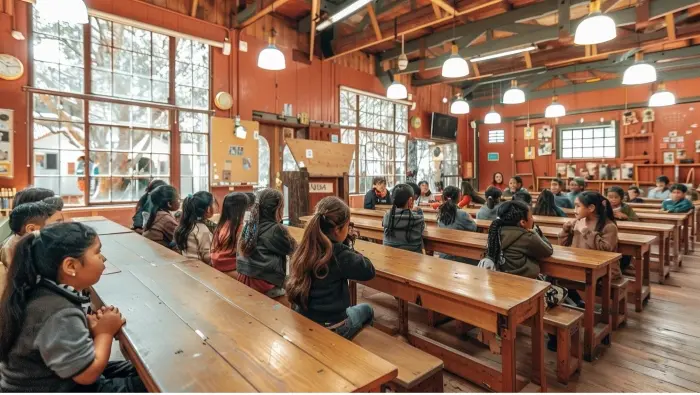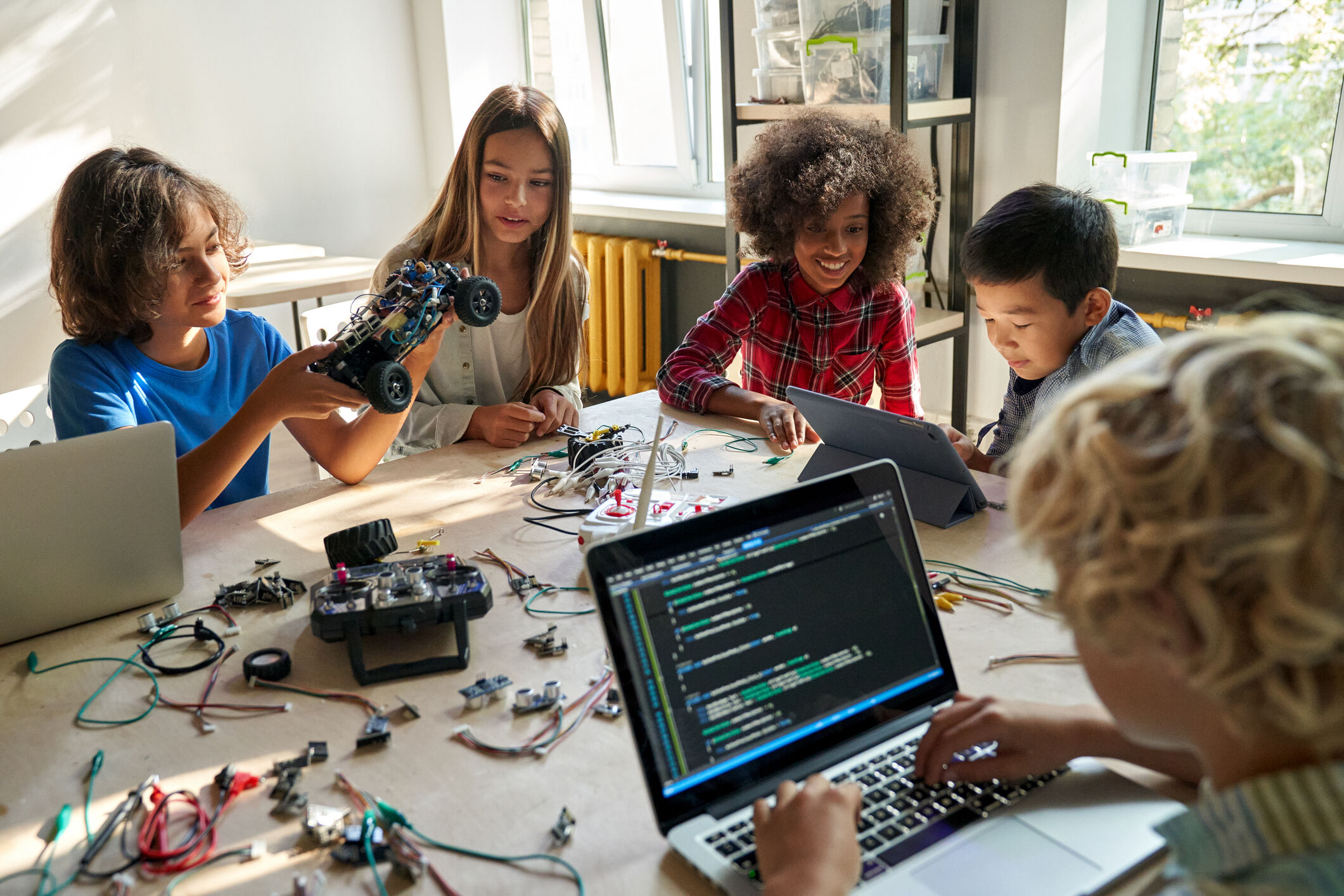
The Rise of Microschools: Reimagining K-12 Education
Microschools are reshaping K-12 education with personalized and flexible learning models.The Rise of Microschools: Reimagining K-12 Education
As I step into the cozy living room turned classroom, I'm struck by the buzz of engaged learning. A group of eight students, ranging from 7 to 12 years old, are scattered around the space, some sprawled on bean bags, others at a communal table. They're all deeply absorbed in their tasks – one is coding a simple game, another is reading a history book, while a pair collaborates on a science experiment. This isn't your typical classroom; it's a microschool in action, and it's at the forefront of a revolution in K-12 education.

The Emergence of Microschools
Microschools have been gaining traction across the United States, offering a fresh alternative to traditional schooling. These small, personalized learning environments typically serve 15-150 students and often employ mixed-age classrooms, project-based learning, and leverage technology to deliver a highly customized educational experience[1]. They combine elements of homeschooling, online learning, and traditional schooling, creating a unique hybrid that's capturing the attention of parents and educators alike.
Why Microschools Are Growing
The growth of microschools has been nothing short of remarkable. According to recent estimates, there are now approximately 95,000 microschools scattered across the country, serving around 1.5 million students[5]. This surge in popularity isn't just a passing trend – it's a response to long-standing frustrations with traditional education systems and a desire for more personalized, flexible learning options.
Advantages of the Microschool Model
From my observations and conversations with microschool founders, the benefits of this model are clear. The small class sizes, typically averaging around 16 students, allow for unprecedented levels of individualized attention[1]. Teachers can truly get to know each student's strengths, weaknesses, and learning styles, tailoring instruction accordingly. This personalized approach can be particularly beneficial for students who may struggle in traditional classroom settings, whether they're gifted learners, have learning disabilities, or simply thrive with a different pace or style of instruction.

Case Study: Sphinx Academy
Take Sphinx Academy in Lexington, Kentucky, for example. This microschool predominantly enrolls "twice exceptional" students – those who excel in one academic area but face challenges in others[4]. By providing a flexible, supportive environment, Sphinx Academy allows these students to flourish in ways they might not in a traditional school setting. It's like giving a talented athlete access to a personalized training regimen instead of a one-size-fits-all gym class.
Flexible Learning Schedules
The flexibility of microschools extends beyond just teaching methods. Many offer hybrid schedules, allowing students to attend classes part-time or combine in-person learning with online coursework[2]. This adaptability can be a game-changer for families juggling various commitments or for students who benefit from a mix of structured and independent learning time.
Challenges Facing Microschools
However, it's important to acknowledge that microschools aren't without their challenges. One of the primary concerns I've encountered is the lack of standardization and oversight. The majority of microschools are not accredited, which raises questions about accountability and educational quality[4]. It's a bit like the Wild West of education – exciting and full of potential, but also somewhat uncharted territory.
Cost and Accessibility
There's also the issue of accessibility. While some microschools operate on a sliding scale or offer scholarships, many charge tuition that can be prohibitive for some families. The National Microschooling Center found that 43% of microschools charge between $5,000 and $10,000 per year, with some costing even more[4]. This raises valid concerns about equity and whether microschools might exacerbate educational disparities.
The Future of Microschools
Despite these challenges, the innovative spirit of microschools is undeniable. They're pushing the boundaries of what education can look like in the 21st century. For instance, Wildflower Schools, a network of Montessori microschools, has developed technologies to assist teachers in student observation and simplify administrative tasks[7]. This blend of traditional Montessori methods with cutting-edge tech exemplifies how microschools can bridge the gap between time-tested educational philosophies and modern innovations.

Microschools' Influence on Traditional Education
The rise of microschools is also having a ripple effect on traditional education systems. As a former public school teacher, I've seen firsthand how the success of alternative models can inspire change in more conventional settings. Public and private schools are increasingly adopting elements of the microschool approach, such as project-based learning and multi-age groupings, in an effort to create more engaging and personalized learning experiences.
Conclusion
Looking to the future, I believe we'll see continued growth and evolution in the microschool sector. We might see more hybrid models emerging, blending the best of microschools with the resources and structure of traditional systems. There's also potential for microschools to play a role in addressing specific community needs, such as providing specialized education in underserved areas or focusing on in-demand skills like critical thinking and digital literacy[1].
For parents considering the microschool route, it's crucial to do your homework. Visit several schools, talk to current families, and carefully consider your child's unique needs and learning style. Remember, the beauty of microschools lies in their diversity – there's likely a model out there that fits your family's educational philosophy and goals.
Reimagining Education
As we reimagine K-12 education for the 21st century, microschools offer a compelling vision of what's possible. They remind us that learning doesn't have to be confined to traditional classrooms or rigid schedules. Instead, education can be a dynamic, personalized journey that adapts to the needs of each learner. While challenges remain, the growth of microschools signals a shift towards more flexible, innovative approaches to education – a shift that has the potential to benefit learners of all backgrounds and abilities.
Final Thoughts
In the end, the rise of microschools isn't just about creating smaller schools – it's about thinking bigger about what education can be. As an educator and lifelong learner, I can't help but be excited about the possibilities that lie ahead. The classroom of the future might just be a living room, a community center, or a virtual space we haven't even imagined yet. And that's a future worth learning about.
References
- The Rise of Microschools: A New Frontier in K-12 Education
- An Early Look at Microschooling in America
- The Rise of Microschools: Revolutionizing Education in India
- Microschools Are Growing Large in the School Choice Movement
- The US Is Experiencing a Boom in Microschools
- Disrupting the System: Can Microschools Fix American Education?
- Micro-Schools in the US: Challenges and Opportunities
- What the Heck Are Microschools?
Project-Based Learning: Preparing Students for Real-World Challenges





Comments
No comments yet. Be the first to comment!
Leave a Comment